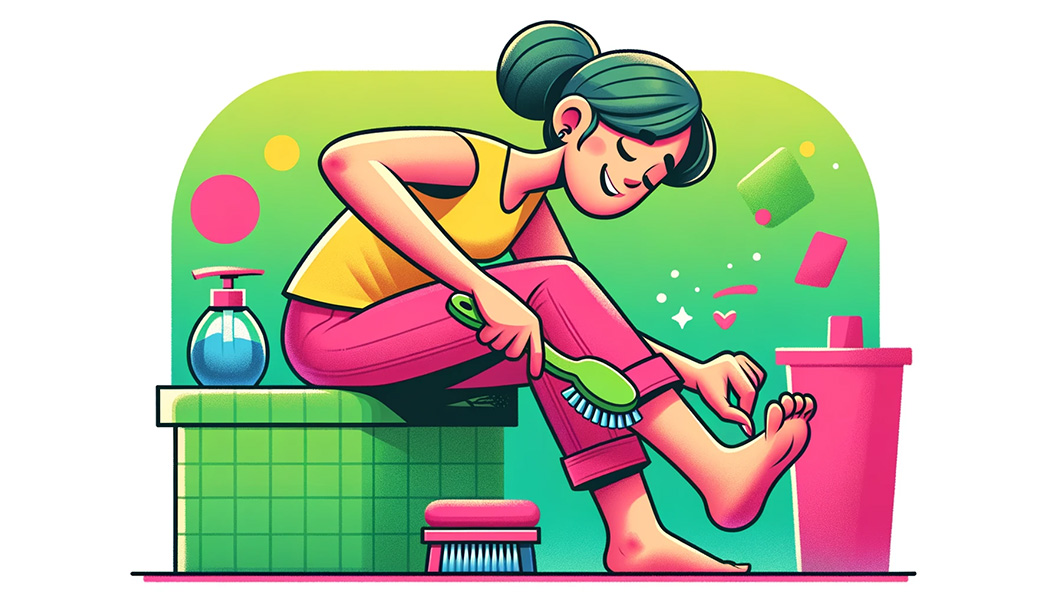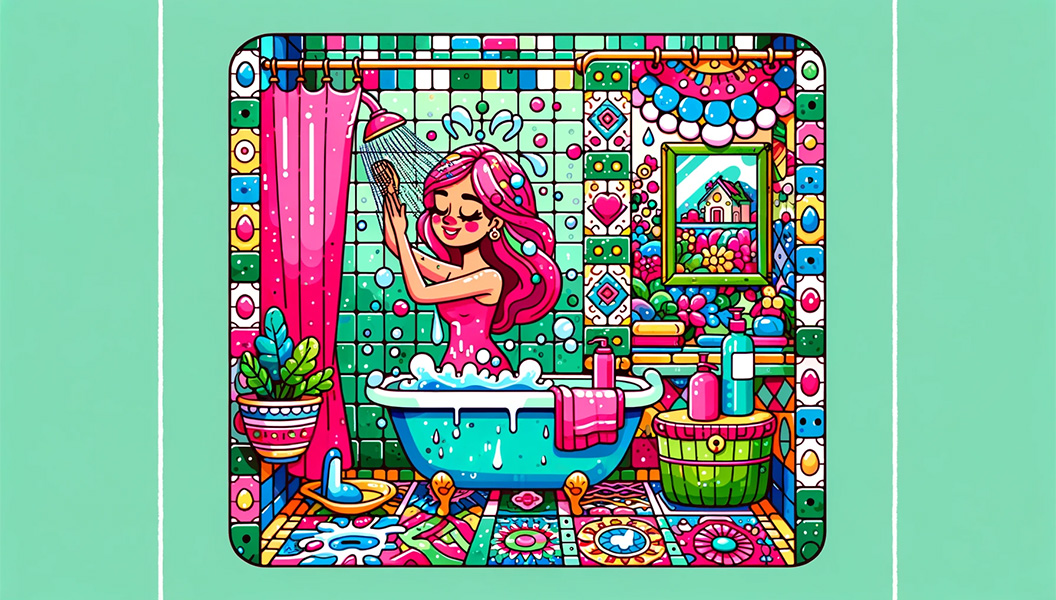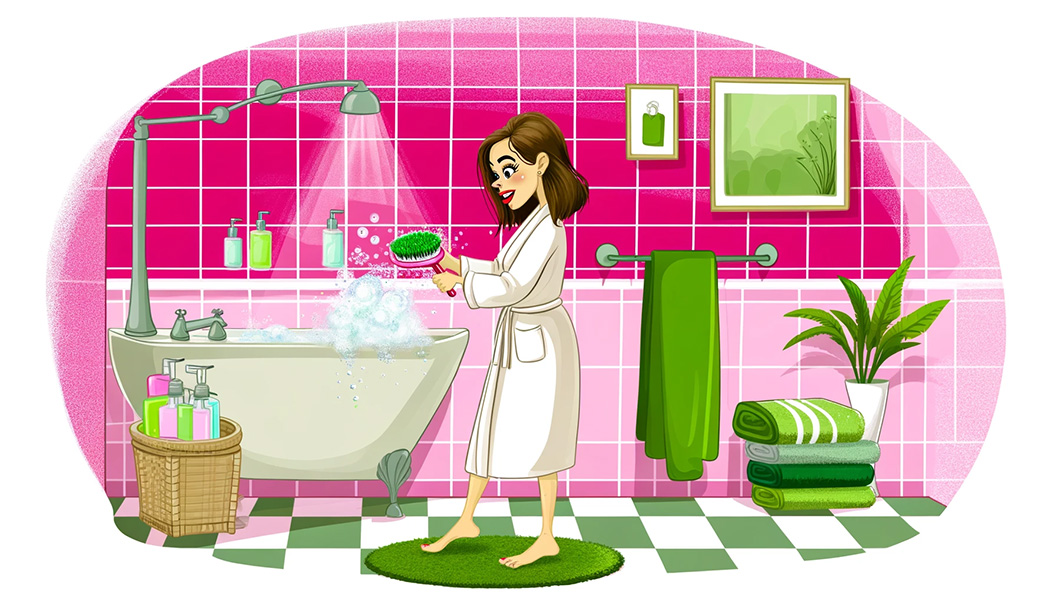Dry brushing is a skincare phenomenon that's capturing the attention of many! With its roots in ancient practices, dry brushing has resurfaced in the modern wellness world. This simple yet effective technique, which involves gently brushing the skin with a dry brush, is hailed for its multitude of health benefits. Some of the possible benefits of dry brushing include exfoliating dead skin cells, increased circulation of the lymphatic system, increased blood circulation, a reduced appearance of cellulite, and even an energy boost!
In this post, we will discuss how to go about dry brushing for healthy skin and a healthy body. From its roots in ancient wellness wisdom to its adaptation to modern lifestyle routines, dry brushing presents itself as an intriguing blend of simplicity and effectiveness!
How To Dry Brush
Choose The Right Brush

The selection of the brush is crucial in dry brushing. Opt for a dry brush that features natural fiber bristles. They should be firm enough to exfoliate dead skin but not so hard as to damage the skin barrier. A brush with a long handle is particularly useful for reaching all areas of the body, including hard-to-reach spots like the back. The shape of the brush, whether oval or round, should feel comfortable in your hand for ease of use.
Here are some factors to consider when finding the perfect dry brush:
Bristle Type: Choosing the correct type of bristle is critical for an effective dry brushing experience. Experts recommend dry brushing using natural bristles, commonly made from materials like boar or horsehair. These natural fibers usually balance firm and flexible, providing effective physical exfoliation without being too abrasive for the skin. For those who prefer vegan or cruelty-free options, synthetic bristles are available, though they tend to be harsher on the skin's outer layer and are less common in dry brushing.
Bristle Firmness: The firmness of the bristles is a crucial factor in experiencing the benefits of dry brushing. Bristles should be firm enough to stimulate circulation, exfoliate dead skin cells, and remove flaky skin. However, the brush bristles should also be gentle enough not to cause skin irritation or damage! Individuals with sensitive skin should particularly look for brushes with softer bristles to avoid any potential discomfort when dry brushing.
Brush Shape and Size: Dry brushes are available in various shapes and sizes, each designed to cater to different needs. Brushes with a long handle are excellent for reaching hard-to-reach areas of the human body, like the back and legs. Handheld brushes offer more control and precision, making them ideal for areas like the arms and abdomen. Choosing the right size and shape of body brush depends on personal preference and which areas of the body you plan to focus on during your dry brushing routine.
Handle Design: If you choose a body brush with a handle, then the design of the brush handle itself is important to consider. An ergonomically designed handle can make a big difference in ease of use, especially in comfort and effectiveness during dry brushing. It should fit comfortably in your hand and allow for easy maneuverability without causing strain or fatigue.
Ease of Cleaning: Maintaining hygiene is crucial when using any skincare tool. Dry brushes are intended to remove dead skin, and build-up will occur on the bristles over time. Choosing a brush that is easy to clean will aid in maintaining hygiene and extending the lifespan of the brush. Some brushes can be gently washed with soap and water, but always check the manufacturer's instructions to ensure proper care.
Start With Clean, Dry Skin

Begin your dry brushing routine with skin that is completely dry to maximize the benefits of dry brushing. The most opportune time for dry brushing is typically before a shower or bath, as your skin is free from moisture, oils, or lotions. A dry top layer of skin ensures that the brush works directly against the skin without any barriers.
Begin At Your Feet

Start dry brushing at the soles of your feet, using firm, upward strokes to cover the entire foot before moving upwards. The soles can withstand more pressure, so you can be a bit more vigorous in this area. This initial step is crucial in promoting lymphatic drainage and circulation in the body's lower extremities.
Move Upwards Toward the Heart

Continue from the lower legs to the calves and thighs, brushing with long, smooth strokes directed toward your heart. The thighs and buttocks, which typically have thicker skin, can handle coarse bristles and firmer brushing, allowing for more vigorous strokes in these areas.
Scientific evidence shows that dry brushing towards the heart is aligned with the body's natural blood flow and lymphatic drainage. Both of these processes are crucial for optimal overall health. The lymphatic system, tasked with eliminating toxins and waste, moves toward the heart. Brushing in this direction supports drainage of lymph fluid and enhances detoxification. Similarly, the circulatory system benefits from dry brushing in this direction, as veins carry blood back to the heart. Brushing towards the heart aids in improving venous circulation, facilitating the efficient transport of blood.
Brush Your Arms

After your legs, move on to your arms. Commence from your hands and progress upward towards your shoulders. It's important to cover both the inner and outer surfaces of your arms, including the underarm area, following the same upward motion toward the heart. This practice not only aids in increasing blood circulation but also helps exfoliate often overlooked areas. There are many lymph nodes under your arms! Gentle pressure in these areas helps rid the lymphatic vessels of waste products.
Gently Brush Your Torso and Back

When brushing the torso and back, it's important to be gentle, especially over the more sensitive areas like the abdomen and chest. The skin in this area is thinner and necessitates a gentler touch. Use light pressure in circular motions at the abdomen, as many branches of blood vessels start to come together here. Avoid dry brushing directly over your heart, and use circular motions for the surrounding chest area. A brush with a long handle for the back will be particularly useful in effectively reaching all areas.
Shower

After completing your dry brushing routine, taking a shower is recommended. This helps wash off the dead skin cells that the brushing has loosened. Opt for lukewarm water rather than hot, as hot water can be too harsh on the skin that has just been exfoliated by dry brushing. A gentle shower not only cleanses the skin but also helps to increase the circulation of the lymphatic system further.
Apply Moisturizer

Moisturizing your skin after showering is crucial in any body care routine. Dry brushing has the potential to strip natural oils from your skin, emphasizing the importance of replenishing moisture afterward. Apply a hydrating moisturizer, body oil, or lotion to your dry skin. Look for products with nourishing ingredients like hyaluronic acid, shea butter, or natural oils (such as coconut oil or jojoba oil). These ingredients are excellent for soothing and moisturizing the skin, helping to maintain its health and glow.
If you intend to spend time outdoors after dry brushing, make sure to apply sunscreen. Freshly exfoliated skin is more susceptible to sun damage. Newly exfoliated skin is more susceptible to sun damage. This step is crucial to prevent sunburn and minimize the risk of long-term skin damage.
Clean Your Brush

Consistently cleaning your brush is vital for preserving hygiene. Wash the bristles with mild soap and warm water, ensuring a thorough rinse. After washing, shake out excess water and let the brush air dry with the bristles facing downward to prevent water accumulation in the handle.
Tips
Frequency Of Dry Brushing
Dry brushing can be a beneficial addition to your skincare routine, but the frequency with which you should practice it depends on your skin type and sensitivity. Generally, dry brushing is recommended to be done about two to three times a week. This frequency is often enough to achieve the health benefits of exfoliation and stimulation of the lymphatic system without over-irritating the skin.
For those who have very sensitive skin, practice dry brushing once a week and observe how your skin reacts. You can gradually increase the frequency if your skin responds well without any signs of irritation or discomfort.
On the other hand, individuals with less sensitive skin might be able to dry brush more frequently, even daily, if desired. Nevertheless, paying attention to your body and your skin's reaction is crucial. If you experience any redness, sensitivity, or irritation as a result of dry brushing, it's best to reduce the frequency.
Avoiding Sensitive Areas
Be cautious and avoid dry brushing over any areas with broken skin, open wounds, varicose veins, bruises, inflammation, severe sensitivity, or skin conditions. This includes avoiding delicate areas like the neck and décolletage, where the skin is typically thinner and more prone to irritation.
If you are unsure whether to practice dry brushing, contact a board-certified dermatologist.
Duration
Dry brushing is an effective method for skin exfoliation and stimulation when done for the right duration. Ideally, the entire process of dry brushing should take about 3 to 5 minutes. This timeframe is adequate to cover the entire body without causing over-exfoliation, which can be harsh on the skin.
Each major section of the body - such as the arms, legs, torso, and back - should receive approximately 30 seconds to one minute of dry brushing. This guarantees that all areas receive uniform treatment. Spending too much time dry brushing can lead to skin irritation or damage, particularly for those with sensitive skin. It's important to be methodical and evenly distribute the time spent dry brushing each part of the body to achieve a balanced exfoliation.
Pressure
The pressure applied in dry brushing should be firm enough to stimulate the skin and blood flow, but gentle enough to avoid causing discomfort or redness. Beginners to dry brushing should start with lighter pressure in a circular motion, gradually increasing to a level that feels stimulating but not painful. The skin may turn slightly pink, which is normal, but it should never become red or irritated. In regions where the skin is thinner or more sensitive, such as the chest, abdomen, and inner thighs, it's essential to use a gentler touch.
Areas with thicker skin, like the soles of the feet, legs, and outer thighs, can handle slightly more pressure. Listening to your body and adjusting the pressure accordingly is crucial, ensuring the process remains comfortable and beneficial. After dry brushing, it's advisable to shower to wash off dead cells. Following up with a good moisturizer is essential to rehydrate the skin, keeping it soft and smooth.

